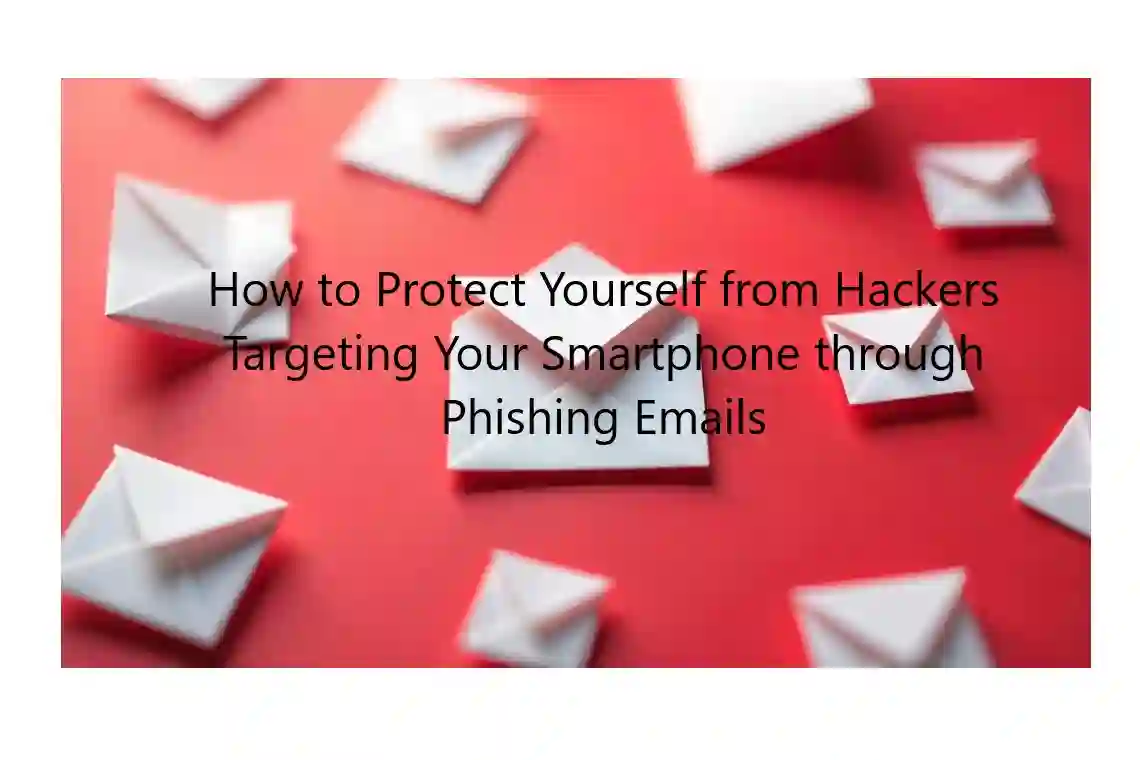Smartphones are already a part of our life these days, to put it mildly. These devices store a whole lot of personal sensitive information from managing finances to communicating loved ones. However, there’s a price for that convenience. With smartphones being hacker targets, vulnerabilities are also being exploited to steal bank accounts, sensitive data and so forth. In particular, phishing using the phishing emails are another common way hackers get on unauthorized. In this article, we will see what phishing attacks are, risks and how can you protect your smartphone from these malicous threats.
What is Phishing?
The cyber attack in which the hackers would deceive users to give them confidential information such as through fraud email, website etc. The idea is that they will think they are talking to legitimate institutions, and therefore give up information — passwords, bank account numbers, credit card numbers — because they feel they are talking to a legitimate institutions.
Phishing always tricking us into thinking we are on the home page of a legitimate site, or deceiving us into interacting with something that they want us to interact with. These emails frequently contain malware in the form of a link or attachment that downloads, or takes them to a site that looks identical to the real thing, but is actually a fake. Fortunately, the user goes to a fraudulent site, so it could be (likely?) that they provide personal info which attacker collects.
Hackers go after smartphones with Phishing Emails How
And because smartphones are everywhere, they have become the perfect hacker’s target. Many will have their devices storing sensitive information; banking details, passwords, personal info, that kind of thing. Also, many of the smartphones are associated with many apps, which can easily be used to pay online, allow hackers to steal money from bank accounts and digital wallet very easily.
The emails hackers send, which have come to be known as phishing emails, never look anything like that. They may appear as if they are coming from trusted sources, your bank, any e commerce site or even a social media site like Facebook or Instagram. The email might include a message warning you about suspicious activity, asking you to "verify" your account or "update" your information to prevent account suspension.
Usually, the emails will have a malicious link or an attachment. Like the real thing, when the user clicks, the victim gets redirected to a fake website. An example might be when the website will be similar to your bank official login site. When you type in your logins and passwords, hackers are paying attention, recording your data and their opportunity to steal your bank funds or pull a fraud.
Phishing Attacks on Your Smartphone: The Risks
Phishing is a terrible, terrible thing and if you get phished there can be severe implications. Here are some of the most common risks associated with phishing emails targeting smartphones:
Financial Loss: Phishing attacks have already tried to put money into the user’s bank account. Once hackers have your banking app or your online payment service, this could lead you to losing money, losing funds, or an identity theft.
Loss of Personal Information: If a hacker breaks into your personal details, say your social security numbers, your emails, your passwords, then that hacker can misuse it at their whim, like to forge or sell it on the dark web.
Identity Theft: If your smartphone apps and accounts are hacked, then hackers can use your identity to rack up a large debt or even blow a large chunk of cash.
Malware Installation: Phishing emails on your smartphone may attach or include links that lead to malware when you click on them. It can steal more information, spy on you and lock your phone, demanding a ransom to release it.
How Phishing Attacks Work: A Step-by-Step Breakdown
To better understand how phishing attacks occur, let’s break down the typical steps involved:
The Phishing Email: More often than not, the hacker sends out a fraudulent email that seems to be from a 'trusted entity,' such as a bank or well known retailer. The email may contain urgent messages, such as "Your account has been compromised" or "You need to verify your account."
The Malicious Link or Attachment: If the email has a link or attachment it will connect you to it. A hyperlink can send you to a place where you may be got redirected to a copy of a certain website before directed to another bogus site like the one you had hit. If the email contains attachment, opening the email can download malicious software in your phone.
The Fake Website: You then see a website that looks like it’s from a trusted site, but it is actually not from a trusted site when you click link. When you should be signing in or asked for sensitive information such as a password, bank account details, or personal identification numbers (PIN).
Data Theft: When you post your personal information on that fake website, the hackers, collecting it, they get to your accounts, or they pour money from them.
Phishing Attacks can Harm Your Smartphone
Fortunately, you can do a lot to avoid yourself getting caught up in a smartphone phishing attack. Here are some best practices to help safeguard your data:
1. Email Always Promises Unsolicited!
It’s one of the best ways to keep from getting roped in fallout of phishing emails to you. If an email comes in from someone you don’t know or if it just appears out of place, don’t click on any links or open any attachments.
2. Verify Email Senders
Be sure to check the email sender before clicking on the link, or giving out personal information. Phishing: If the email appears to be asking that you update your bank password and the email address you’re looking at doesn’t seem fairly acquainted, this may point out it’s phishing. Never email official institutions and ask for sensitive information.
3. Check for Red Flags
Look out for common signs of phishing emails, such as:
Now it is spelling or grammatical errors. Urgent or threatening language (e.g., "Your account will be locked unless you act now!") Generic greetings, such as “Dear Customer,” instead of your name Suspicious email addresses or links that don’t match the official domain of the organisation.
4. Use Anti-Phishing Tools
Most smartphone security apps and email services have built in anti phishing tools. Even these tools will block phishing emails it before your Inbox. You can use an internet security softwares , an antivirus / anti malwares software with phishing protection if you wish.
5. Keep Your Software Updated
And for your smartphone, don’t forget that you should keep your operating system and all its apps updated. Many updates include security patches updating against new phishing techniques and different types of malware.
6. Two Factor Authentication ( 2FA )
Two factor authentication (2FA) is an additional layer of security which can be allowed by enabling on accounts which already have it. This is another layer of security that if hackers do get your login credentials they won’t be able to get into your accounts but they can still irreversibly damage it.
7. Report Phishing Attempts
If you receive a phishing email, visit a suspicious site or get an email from a suspicious source, report to the proper authorities or your email provider. They are done to stop others from falling victim to the same scam.
Conclusion:
Stay Safe in the Digital Age
Around the world, those from all walks of life are being targeted by a menace on the rise: phishing attacks on a smartphone. Phishing Attacks – learn about the basics and how to protect you device and your personal & financial information. Given the nature of email, web and online service, you should always be wary before it arrives. It’s small and easy to prevent hackers from exploiting your smartphone to do some malicious things.
Keep your smartphone secure: Just because you use your smartphone to access the internet doesn't mean it should continue to be used as a convenience or a piggy bank for cyber criminals, which is why being informed is the first step and practicing internet best practices is the next. This is you, this is a key to your happiness, to your life, to yours, so protect your data.




